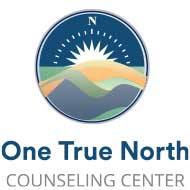
Anxiety can be experienced in a number of ways:
Generalized Anxiety Disorder is typically frequent uncontrollable worries, restlessness, and trouble with concentration. Some symptoms can include: Feeling nervous or irritable, having a sense of impending danger, panic or doom, having trouble sleeping. Some physical symptoms can include: Having an increased heart rate, breathing rapidly, sweating, feeling weak, tired and shaky, gastrointestinal problems.
Generalized Anxiety Disorder can be effectively treated with Cognitive Behavioral Therapy (CBT), Dialectical Behavioral Therapy (DBT) and Acceptance and Commitment Therapy (ACT). These treatment protocols are available through One True North Counseling’s Certified Clinical Anxiety Therapists.
Panic Attack is typically repeated attacks of extreme fear that last for several minutes and then subsides. Often this happens out-of-the-blue or spontaneously. Symptoms of a panic attack can include: pounding or rapid heart rate, sweating, trembling, shortness of breath or feeling like you can’t breath, nausea, dizziness, fear of dying. The main difference between a panic attack and other anxiety symptoms is the intensity and duration of the symptoms. Panic attacks typically last less than 10 minutes. When someone becomes intensely afraid of having a future panic attack, this can become Panic Attack Disorder.
Panic Attack / Panic Disorder can be effectively treated with Cognitive Behavioral Therapy, Exposure Therapy and Polyvagal Therapy. Learn more from our Certified Clinical Anxiety Therapists.
Social Anxiety Disorder is typically experienced as discomfort around social interactions and fear of being embarrassed and judged by others. This can range in severity from mild discomfort to intense panic.
Social Anxiety Disorder can be effectively treated with Cognitive Behavioral Therapy and Exposure and Response Prevention. Learn more from our Certified Clinical Anxiety Therapists.
Obsessive Compulsive Disorder is typically persistent intrusive thoughts, urges or impulses (Obsessions), along with behaviors or mental acts (Compulsions), in an attempt to control or eliminate the obsession. Some examples of behaviors can include hand washing or checking. Examples of mental acts can include counting, repeating words, or seeking reassurance.
Obsessive Compulsive Disorder can be effectively treated with Cognitive Behavioral Therapy and Exposure and Response Prevention. Learn more from our Certified Clinical Anxiety Therapists.
Post Traumatic Stress Disorder
